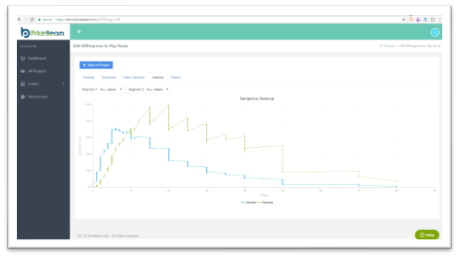Knowing the Willingness-to-Pay of your Competitor's Customers
 PriceBeam
·
1 minute read
PriceBeam
·
1 minute read

Are your prices based on costs? Or a process of adding X% on last year's price? Or do you price based on what the nearest competitor is charging? Well, then of course you are in need of upgrading your overall pricing approach to value-based pricing, where prices are set based on the value you create. Often the value-based pricing strategy is supported by data and research about your customers willingness-to-pay. If you know what a customer is willing to pay, and what features she values, then value creation and value capture is much more accurate.
But value-pricing doesn't mean that the competitor pricing is irrelevant, even if focus should be on what value you create, communicate and capture from the customers through your pricing. Willingness-to-pay research should cover your own product or service, but if e.g. using PriceBeam's Comparative Willingness-to-Pay solution, then you can scientifically pinpoint not only what customers are willing to pay for your offering, but also what they are willing to pay for the competition, all at the same time.

If there are e.g. differences in WTP for specific features, or you find that you score higher on Feature A versus competition but lower on Feature B than that of the competition, then you can capture additional value by aligning your pricing on Feature A with the higher willingness-to-pay, but in parallel also look at how you can become better at Feature B. Or for that matter look at targeting customer segments that appreciate Feature A over Feature B, so you win more often in that customer segment.
Competitors' pricing can become a distraction, if all of your pricing focuses solely on positioning against the competition, as you end up losing focus on your own value and why the customers should buy from you. But gathering insights about how customers view the value created by the competition can be very useful when creating your own value creation framework.
.png?width=400&height=100&name=PBLogoTransparent%20(1).png)



